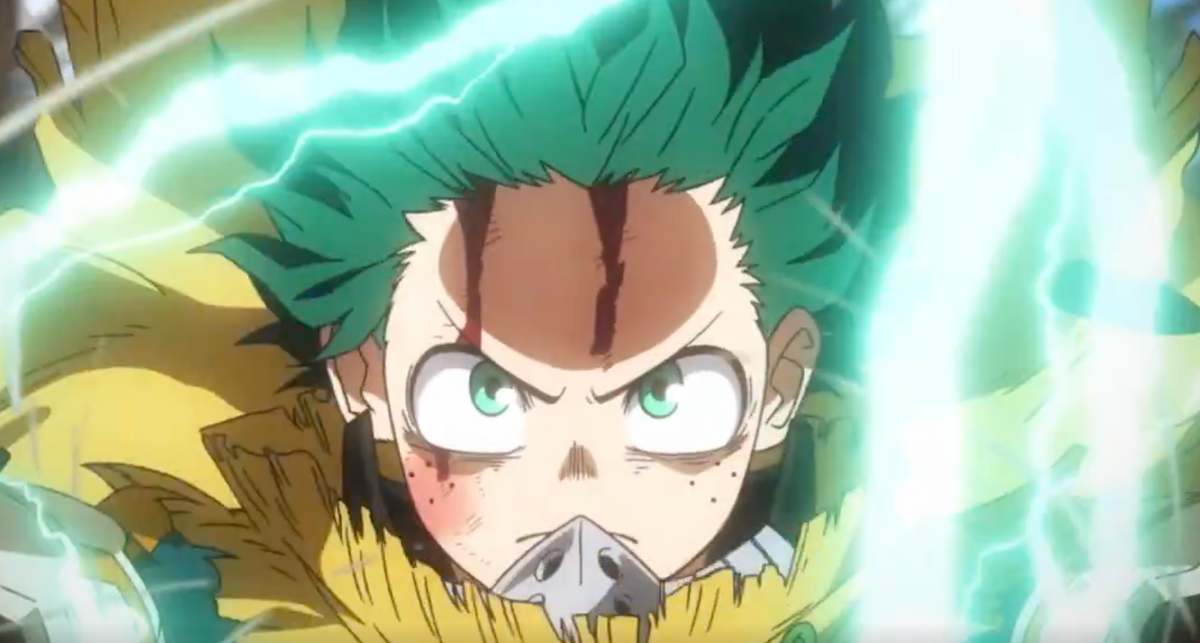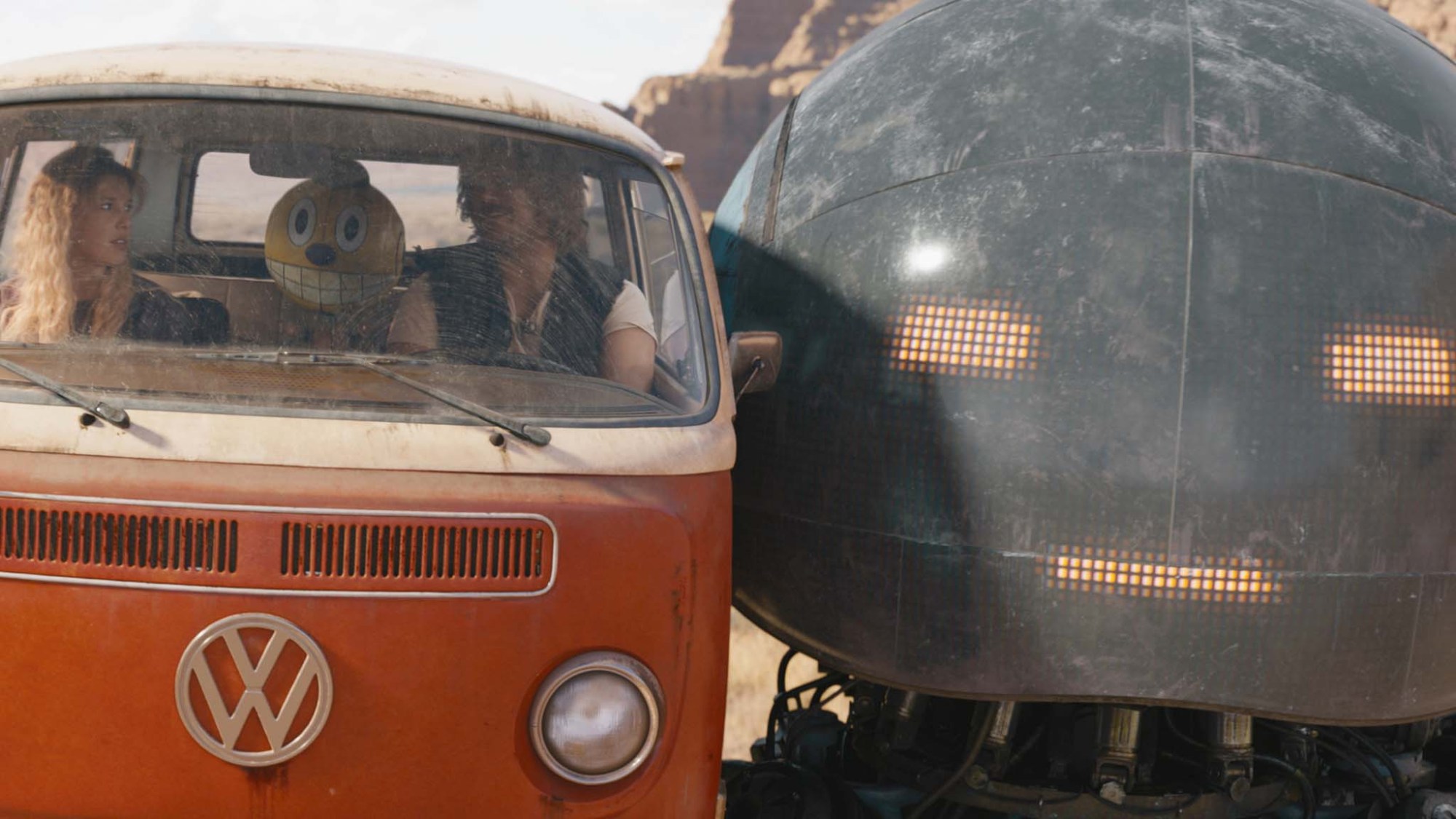A Kickstarter campaign to resurrect the beloved comedy hero Ernest P. Worrell has already nearly tripled its initial funding goals on Kickstarter with more than a week to go in the drive. The real work is starting soon — and it’s notable not just because the planned graphic novel is definitely going to happen now…but because it shows there is still a good deal of enthusiasm for Ernest himself. The character will return in Ernest and the Dreamstone, along with Dr. Otto, another character performed by the late Jim Varney.
Varney, who passed away in 2000, had a varied career, but he’s undoubtedly best-known for playing Ernest (as well as Slinky Dog in the Toy Story films). Ahead of the last week of the graphic novel’s campaign, ComicBook sat down for a Q&A with Ernest and the Dreamstone author Corey Perkins, as well as Justin Lloyd, who is not only Varney’s official biographer, but also his cousin.
Videos by ComicBook.com
Below, we’ve shared the video of the interview, along with a write-up that has been edited for brevity and clarity.
ComicBook: The Kickstarter campaign is doing incredibly well. How’s it feel to get that weight off your shoulders?
Corey Perkins: Man, it’s been wild. The relief I felt when we met our goal, and then we kept going, is so palpable. I remember the day after the launch, I woke up…and I thought, “Oh, there’s an absence of stress and urgency in my brain. This feels nice.” It’s felt great, and all the fan support has been fantastic to see how much love is out there for Ernest still.
I mean, some people are just so excited, and that makes me excited.
ComicBook: How did you guys meet up originally?
Justin Lloyd: I guess it was Ernest Day this past summer, when we were set up in the same area to sign autographs. He was he was there to promote the comic, and I was there selling some books, and they set us up at the end of the whole row. We were not under any protection there, and we were starting to get sunburned, so we’re like, “We need to move this table over, and we just started talking about Ernest, and quickly became friends.
And he steps away, and I’m helping him; I’m talking to the people about the comic, and I’m already kind of feeling like I’m helping him promote it right from the get-go.
ComicBook: How early did you become that Corey and [producer Justin] Cherry were looking to bring Ernest back?
Justin Lloyd: It probably wasn’t too long before I had met him at that Ernest Day. I think I had heard something about somebody working on a graphic novel, some professor there in Tennessee, that had gotten the rights to do it from Josh. I just thought, “Yeah, that sounds like a great idea.”

Sadly, when Jim passed, in a sense, Ernest was gone too. There’s been no Ernest movies. There’s really been nothing of Ernest to come out — not even any toys, anything. I know when my book came out — yeah, it’s about Jim Varney, but it also is about Ernest — and it gave the fans something to sink their teeth into, that involves Ernest and his background, his story.
But apart from my book, there’s been nothing. So I thought, an Ernest product of of any kind, I think, is gonna be huge. I was very excited to hear that.
Corey Perkins: Justin just discovered this week that he actually did receive a text about the idea of a graphic novel, at the beginning stages, from one of the writers from one of the original movies. I don’t know what happened, but me and Justin are buddies, and now we’re talking all the time. He was contacted probably from almost day one.
ComicBook: You touch on something there that I think is interesting, because I think a lot of fans would argue that there’s no Ernest without Jim. What would you and the family think if the Cherry family were to bring a new actor in to play the role?
Justin Lloyd: I would embrace that.
I know that fans are very protective of this character, probably more so than, than I am. And, um, I, I probably feel the same way. I do. Um, the way that they continue Slinky Dog in the Toy Story 3 and 4. The way I look at it is, Jim did such a great job at inhabiting that character, playing that character, that I think he would be receptive to that character surviving, if somebody else wanted to take that over.
Of course, he’d probably feel like, “well, I’m good, “…but nobody’s going to play it as good as me,” perhaps, but that I think he would feel good about the fact that he made such an impact with that character, that people still want to see that character.
Of course, in a graphic novel, it’s it’s probably going to be easier to be receive than a live action movie. In a movie, if you don’t find just the right person, then that could be very difficult for the fans to really accept them. Some fans may never accept anybody other than Jim, and I understand that, and I respect that.
ComicBook: It doesn’t hurt that in the graphic novel, Ernest is able to look like Jim. Corey, was there any point when you were considered a less photorealistic take, or did you always have a clear sense of you wanted that book to look like?
Corey Perkins: I had a general sense. I didn’t know exactly what it was going to look like, but I knew this story is a spooky story. When we tried out artists, we tried out a lot of artists. There was a cartoonist that we really liked. In fact, he’s gonna have…maybe a cover of a chapter in the graphic novel.

We thought, “Man, that’s very Ernest-y. But, I didn’t feel that a cartoonist matched the vibe of this Ernest story. Like, if I were to see Ernest Scared Stupid in a graphic novel, I’d want the more, um, edgy, sketchy look of the comic rather than the more cartoony version of Ernest. I just feel like that fits spooky better to me.
And and I grew up reading Jim Lee comics and stuff, right? I grew up with the the sketchy type of penciling, so that felt close to me. We ended up going with Arief, who is from Indonesia, and It just turned out to be more of a realistic-looking Ernest because that feels like right for the story.
ComicBook: If you do follow ups of any kind, would you always want to go with Arief because he did a great job? Or would you be open to playing around with the look and seeing what goes with the tone of any given story?
Corey Perkins: I think both. Like, I love working with Arief. He’s so excited, and he’s so flexible, and he’s so willing to try to make the product great. I remember I told you in the first interview, when Arief sent his first illustrations of Ernest, maybe they weren’t all the way there yet. But this guy put in more effort than anybody. He would send another one in, and then another one in. And then, suddenly it was like, “Wow, this guy’s really improving, or like he really wanted it.” I’m blessed to be working with him.

ComicBook: Justin, I talked to Corey a lot about Ernest Scared Stupid. Do you have a personal favorite of the Ernest movies? And, how differently do you view it than the average fan, by virtue of the fact that Jim was your uncle?
Justin Lloyd: That’s a good question. I love the Christmas season anyways, so Ernest Saves Christmas may be one of my favorites.
Definitely, the first four stand apart on their on their own — [Ernest Goes to Camp], Scared Stupid, Christmas, and [Ernest Goes to Jail]. There are definitely scenes in all those that are really, really good.
I was a bit older when those movies came out; I was about 15 when Ernest Goes to Camp came out. I know they were really geared more for younger kids, and so I wasn’t into that humor as much. I gravitated more to the commercials, really. I could definitely see how [the movies] appeal to young children, and knowing how much characters like Superman meant to me when I was younger, I could definitely understand how he was seen as a hero. That really resonated with me, especially when I wrote my book.
He was so many different types of people in, in one person, but there were definitely a lot of elements of Ernest that were part of him. The curiosity that he had, the natural curiosity about things; wanting to be your friend; and probably most of all, just being authentic. I think no matter what you can say about Ernest, he was who he was, warts and all. I think that was a lot of Jim as well in that.
ComicBook: I find the commercials interesting, because he was never Flo from Progressive. He wasn’t a pitch person for one thing. Do you think that diversity of…”interests”…contributed to his eventual movie personality? It feels like they created this blueprint that you could put into any situation.
Justin Lloyd: Yeah. He was almost like a plug-and-play character, where he was compared, early on in the 80s to the Wendy’s “Where’s the Beef?” ads.
Instead of a punchline like that, the Ernest commercials had these taglines, “Hey Vern,” and “know what I mean?,” which were adaptable to anything. They weren’t just a punchline for a certain product; they were adaptable across everything from gas companies to milk, ice cream, to advertising your news channel.

Like you’re saying, he could sell anything — and then, in a movie, he could basically do anything. You plug him in anywhere, and he could just make it work. I’m sure they learned a lot from the commercials that went into, making really good movies.
Corey Perkins: I learned this from Justin’s book, The Importance of Being Ernest, so we’ll come back to that later. In Justin’s book, he talks about that Jim Varney had these characters that he was working on from the ’70s. He was not only working on the Ernest character, he was working on all these stand-up characters, and learning how to imitate people in his family, and people he knew.
When the Ernest movies come around, and you see Ernest Scared Stupid — which, again, is my freaking favorite…not my favorite Ernest movie, one of my favorite movies ever — and he’s doing rapid fire impressions of different people, some of those people that he’s impersonating were already created and ready to go. He had worked out the characters through stand up, and so when you throw them into the Ernest movies, they’re funny. And so that’s cool how he had these different elements that he was able to bring into the Ernest movies. It’s almost like if he hadn’t gone through those experiences, the Ernest movies wouldn’t have been as awesome as they were.
Justin Lloyd: Jim was just one of those people who had so much talent, that he was going to hit on something eventually, and it just happened to be Ernest. When Ernest first came about, he had been out in Los Angeles for five years and had some some success, but then there was an actor’s strike. He comes back to Kentucky, and he’s out of work and he’s doing odd jobs, and then the next day, he’s getting a call from John Cherry. Then Ernest comes out, and it’s out of the blue, and in a year or two’s time, it takes off…it just explodes.
They didn’t always even have a full script on those commercials. I mean, just an idea of something, and he would just make it work. Like this potato chip commercial — they gave him a potato chip bag and, as John Cherry describes it, he’s feeling around, not even saying a word, and it’s obvious that it’s empty.
At the end of the commercial, he just cries, “All gone!,” and he smashes the bag on his face, John Cherry said the whole room just died with laughter. It was just Jim, making things happen with an empty potato chip bag. That’s what he was able to do; it was just really something.
ComicBook: The ads in particular almost play like a Weird Al Yankovic song. He has all these deranged protagonists who obsessed with someone, and meanwhile the other person is trying desperately to close the door. There’s a weird, antisocial genius that comes out of people who don’t know how to turn the off switch.
Justin Lloyd: Yeah. He wanted to be Vern’s friend, and wasn’t always good at picking up on the fact that Vern didn’t want anything to do with him.
Corey Perkins: I think there was some genius in that too. Justin and I have talked about this before — they created the Vern character for budgetary reasons.
It’s not like they were like, “Oh, we have what’ll work.” It was like, “Well, we don’t have enough money, so we’ll just have the camera guy hold it, and he’ll act like Vern. They stumbled upon something really genius, because there’s a reason why these commercials took over America and captured the hearts of so many people, and Ernest became such a pop culture sensation. I think part of that is, Ernest’s…umm…earnestness and his authenticity, and his childlike behavior makes you trust him, and it makes you feel safe with him.
There’s also the idea that he’s looking straight in at you. Maybe he gets on your nerves, but you want a neighbor who’s so caring and authentic. I’ve also told Justin this before, but yeah, Parks and Recreation and The Office, they created these documentary-style shows where they’re looking at the camera, and talking to the camera. You feel this connection with the character, but if you think about it, Ernest was way ahead of the curve. They were doing that a long time ago with Ernest and Vern, it’s just that Vern’s a person, not a documentary filmmaker.
ComicBook: It’s funny how important posture is — you talk about Superman, and that’s a really great example, because the way that Jim held himself as Ernest made him look like skinnier and ganglier and less imposing. It’s interesting when you look at pictures of him in and out of wardrobe!
Justin Lloyd: Yeah, and he was a pretty muscular guy, too. He wasn’t big, but he was pretty lean and muscular and yeah, the t shirts he wore were kind of oversized and baggy and yeah, he looked much skinnier and more frail.
Jim naturally athletic, as you could see with Ernest, with so much physical comedy. He didn’t ever play sports or anything in school, but just was athletic naturally, and very strong for his size, which made his portrayal of Ernest that much better.
Corey Perkins: A lot of people think of Ernest as just this like, bumbling hillbilly, and they don’t think there’s much to the acting job behind it, and they’re wrong. If you put on a khaki hat and a jean vest, and you stand in front of the mirror, and try to act like Ernest — trust me, I’ve tried — it does not look the same.
I’ve dressed up as Ernest for Halloween, because I’m an Ernest nerd, but becoming Ernest is a different thing. Jim Varney was such a trained actor, and had such an incredible physicality in his acting if you watch those movies. Especially by the time he gets to Ernest Scared Stupid, He’s like a Looney Tune. Before he runs, he puts his elbows way up and then he lifts his knees way up. There’s so much physicality behind that character. I’m always just blown away by the acting job that a lot of people overlook.

Justin Lloyd: The ads, too. He’s got to do all this, and sell the product and do the gag and make sure he’s getting the lines right, and it’s a little less than 30 seconds. I think he said at one point, he had a timer on his head — it was 28.8 seconds. He made it looks very easy, for sure.
Having the camera so close to his face, they couldn’t use cue cards. So he did pretty much have to memorize all of those commercials. A lot of them, there was a good amount of dialogue.
Corey Perkins: And in the Ernest films, not only was Jim Varney involved in this, but there was also an awesome team of writers — really funny people — that were involved in writing these scripts, and it’s really brilliant some of the stuff they came up with. I’ve read the screenplays, and I’ve even read screenplays of movies that haven’t that were never filmed. Ernest does long, flowery monologues with huge vocabulary words — some of them intentionally mispronounced — and so I always like to give credit to the writers, because the writers were really smart, and a lot of times people overlook how smart the writers were involved — all from Nashville.
Jim Varney then had to memorize these massive monologues, and just spit them out, It’s incredible. He’s famous for being a having a photographic memory, but the the ability to spit all that stuff out is really incredible.
ComicBook: With,, with the comic, I have to imagine there’s some element of scripting this that’s a challenge. Trying to capture that motor mouth aspect without placing balloons all over the entire action.
Corey Perkins: We spent a long time thinking about how to make sure to keep it authentic, because Ernest does have long monologues, and in comic book culture, it’s like, “Don’t have too much dialogue, or it’ll take over the art.” But if you cut down Ernest’s dialogue, you don’t get Ernest, and you won’t hear Ernest’s voice in your head.
First, it started with writing a script. I wrote a screenplay first, and then we adapted it to comic book form, So what we’re doing is — I actually learned this from Monstress — we’re gonna try to push the art out closer to the bleeds, and um, we’re shrinking the font a little bit, so that you can, you can keep the art there and keep it dynamic, but also allow Ernest to do, as you called it, the motor mouth.
We worked on the dialogue itself, and we focused on that, and then we adapted it. The challenge is to get the pieces of dialogue in the right panel, and getting it looking right, so you can try to hear Ernest. A lot of care has gone into that. Whether we’ll do perfect or not, you know, probably that’s impossible. But we’re definitely trying as hard as possible to keep it authentic.
I’ve been really happy with the way the pages turned out. We’ve only got like right now, basically five pages of concept for Kickstarter. But once the Kickstarter ends, we’re immediately going to go in production, and our artists are already in.
ComicBook: Justin, what’s it like for you to look at the art? It looks so much like a direct likeness of your uncle instead of trying to stylize “Ernest.”
Justin Lloyd: I think it’s great, I think it’s great to see — to bring Ernest into the world today. Some of the references in the screenplay are modern references, and so that’s really cool.
I’m not in this world, but I was really impressed with, all of the art that he sent.You can feel the action in the pages; they capture the action. That’s so hard to do, because being a cartoon character, and trying to capture action from a still photograph can be very challenging.
ComicBook: Was there a challenge in finding an artist who specifically could do both the emotions on his face and also the physicality of the visual storytelling?
Corey Perkins: Well, you’re giving me way too much credit as if I was a genius and had the perfect idea.
I just went all off instinct. It took forever to find the right artist. I went on DeviantArt, and there’s hundreds and thousands of pages of art and color. I scrolled through DeviantArt — I’m talking about till my eyes burned, hours and hours and hours and everything would look the same — for the illustration and the color.

Then, when something popped, I knew it was interesting, because it’s different now. “Oh, that’s good, oh, that’s good.” That was the process of finding the illustrator and the colorist.
And then, I compiled this massive compendium of Ernest stills from the movies, of Ernest facial expressions that are references for panels, because it was really important for me, character wise, to make sure he was making the right facial expressions. If you’re a big Ernest fan like I am, it needs to feel like Ernest. The facial expressions have to be there; that was a big part of the act, you know? I probably have at least a thousand stills, if not two thousand stills, and I have them labeled by emotion: Happy, sad, wide eyed, nervous, nervous and excited, scared to be here. That way I could try to find the right emotions as I’m making the script.
So, one of the, to answer your question, was it hard to find that bridge? I think I found the cheat code, because a photorealistic guy creates this stuff that looks like a picture, and a visual guy tells the story more clearly, but Jim Varney as Ernest was already so cartoon-like that if you draw his facial expressions you get this cartoon-like performance. I think that this is almost like the cheat code — Ernest was already this cartoon, so you’re just taking a human cartoon and turning him into a cartoon cartoon.
You can see more of our conversation in the video above, and preorder a copy of Ernest and the Dreamstone at ErnestGoesToComics.com. Justin Lloyd’s The Importance of Being Ernest: The Life of Actor Jim Varney (Stuff that Vern doesn’t even know) is available at online booksellers including Amazon, with an audiobook on the way soon.







